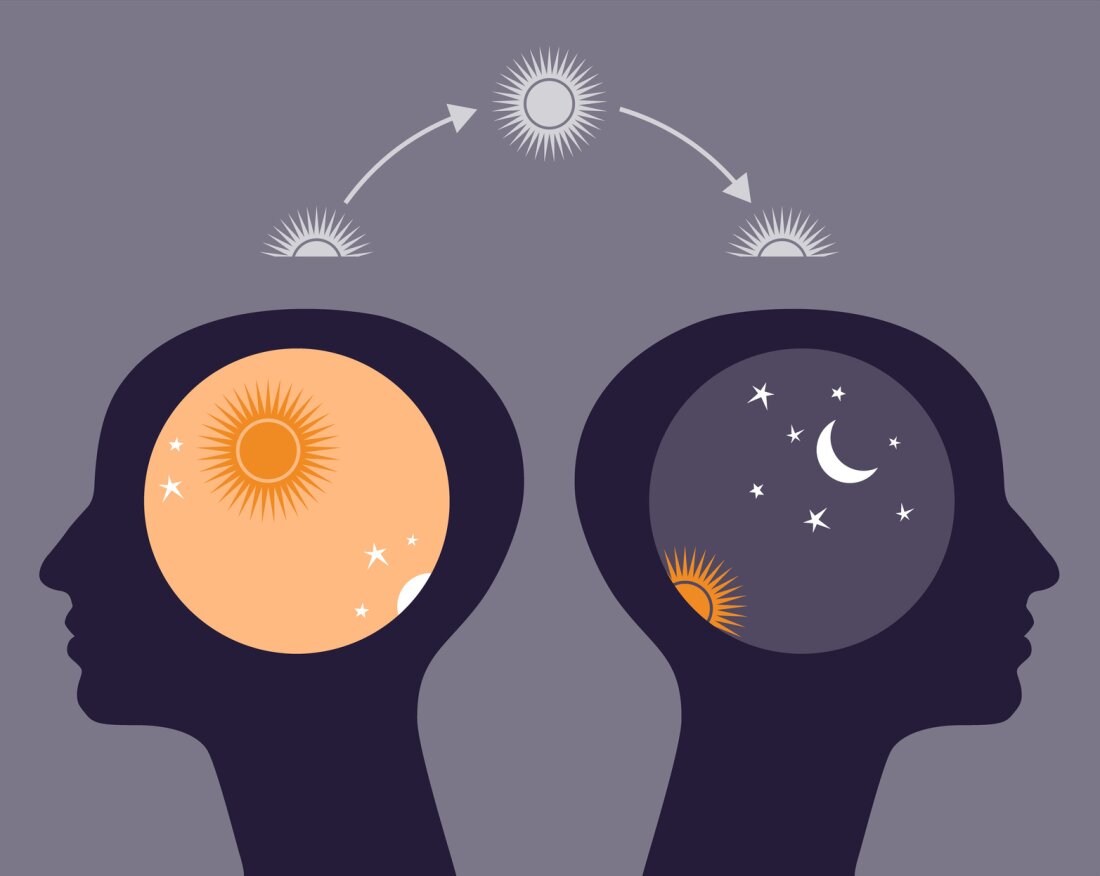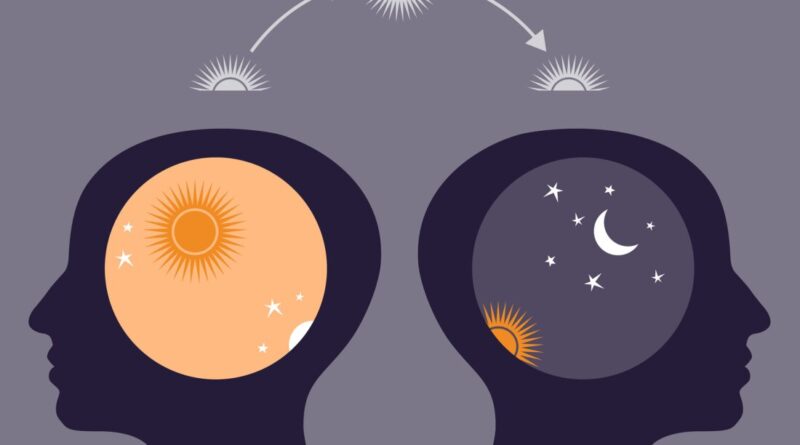Getting more light during the day and less at night is good for your health. Here is the reason

Dark nights and bright days predict death, new study finds.
Mar Lei/ Getty Images
hide description
toggle caption
Mar Lei/ Getty Images
Food, exercise, sleep – all are important in our lives, but our relationship with light is rarely mentioned. Now, a major new study suggests that light-driven interference can take years off our lives.
The scientists followed nearly 90,000 people in the UK who spent a week wearing hand-made devices with light sensors. Then, they assessed their risk of dying over the next eight years. The results were published in Bulletin of the National Academies of Science.
Participants with the brightest nights had a 21% to 34% greater risk of premature death, compared to those with the most darkness between midnight and dawn .
It was very different from the day.
People who enjoyed the brightest days had a 17% to 34% lower risk of dying than those who lived in the darkest places during the day.
The data highlight that light represents “an emerging risk factor for health and longevity,” says Daniel Windred, lead author of the study and a postdoctoral researcher at Flinders University in Australia.
Previous large studies have found similar relationships between death and light exposure, for example using satellite data and self-reports. However, the UK study is the first to directly measure a person’s light environment during the day and night.
“It is a very powerful study,” said Dr. Charles Czeisler, director of the Division of Sleep and Circadian Disorders at Brigham and Women’s Hospital and Harvard Medical School.
“We are not talking about a small change. We’re talking about a significant increase in risk associated with a highly variable risk,” he says.

Although the study can only show a relationship – not to prove causation – the response “depends on the amount” to light was seen even when the researchers controlled factors such as socio-economic benefits, income and physical activity.
The results reflect decades of research showing that our modern relationship with light can spell disaster for our circadian rhythms – the patterns in our physiology and behavior that change during the cycle. of 24 hours – which influence sleep, blood pressure, energy expenditure, releasing hormones. and countless other activities.
Czeisler says: “At night we shine a light that we have never been able to see and it protects our light during the day.
Here are four takeaways from the survey.
Outdoor light is the best
The benefits of having bright days were the same from morning to evening.
Windred says the results aren’t hard to interpret: They represent people who spent time outside during the day.
“There’s a big dynamic jump between the indoor and outdoor environments,” he says.
We are talking orders of magnitude.
In a typical indoor environment, you may be exposed to 100 to 500 lux (a measure of light intensity), compared to anywhere from 10,000 to over 100,000 lux depending on conditions and time of day. . Even a cloudy day can exceed 1,000 lux.
The central “circadian pacemaker” in our brain is sensitive to light in the morning, and leading light at that time can make you more alert.
But even if you can’t get rid of it, Windred says you’ll still reap the benefits of outdoor light later in the day. If you get off work in the afternoon and the sun is shining, it’s still a good time to get some light.
In fact, Czeisler says people tend to underestimate the effects of being outside at dawn and dusk — times when you’re exposed to different wavelengths and intensities of light.
He says: “We think these changes are very important. However, as long as the sun is shining, he encourages people to go outside, at least half an hour to 45 minutes.
He says: “They don’t need to be all at the same time, this will help their health a lot.”
Look at different things
You can see the circadian rhythm as a steady wave, and the ups and downs reflect your body’s changes throughout the light and dark cycle.
Digesting food, repairing organs, energizing our brain and removing toxins, all of these work best when the circulatory system is like a strong current.
And light is the strongest symbol. During the day, it can improve our rhythm – and at night, suppress or change their timing.
Laura Fonken, a neuroscientist at the University of Texas at Austin, says: “This study highlights that you really need this difference, it’s not just a matter of having a little light during the day or a lot of light at night.
Put another way: You don’t want your lighting environment day and night to be comparable. That can easily happen if you spend most of your days in an office, without much natural light, he says.

In fact, data from the UK suggests that the risks may increase if light causes your circadian rhythm to go out of sync in both directions.
“We estimate that people with bright days and dark nights can live five years longer than people with bright nights and dark days,” says Windred.
Light can protect
Brighter days can also set you up for better evenings – improving your sleep and protecting you from some of the problems of artificial lighting at night.
“We know that exposure to daylight during the day can reduce our immune system’s sensitivity to light exposure at night,” says Windred.
Studies measuring the effect of nighttime light on the sleep-promoting hormone melatonin support this theory: Study participants who spent the day in dim conditions had a greater concentration of melatonin when exposed to light at night. That is compared to those who were exposed to more light during the day.
Czeisler says this does not mean that you will not be able to completely tolerate the damaging effects of light during the evening, especially the blue light created by our devices.
“That sends a message to the brain that it’s daytime,” he says.
Czeisler’s lab wrote that reading light-emitting tablets several hours before bed can “alter circadian rhythms, making it harder to fall asleep, more difficult to wake up, and less likely to wake up.” go away. going to bed early the next day.”
Keep the lights off at night
People who were less likely to die in later years were exposed to any light between midnight and 6am, the study found.
On the other hand, bright light during the dead of night – especially between 2:30 and 3am – was associated with the highest risk of dying.
He says: “This is the most important time to avoid light, it is also the time when the circulatory system is most sensitive to light.”
In recent decades, scientists have linked light-induced disturbances to all kinds of health problems – obesity, heart disease, diabetes, cancer, mental illness and other conditions. Scientists have even shown that short-term circadian rhythm imbalances can affect blood pressure and the way the body processes glucose.
The dangers of working at night are well documented, especially for cardiovascular health.
However, in this latest study, Czeisler points out that even when shift workers were excluded from the analysis, the negative effects of bright light at 3 or 4 in the morning were still “significant. “
The best time to turn off the lights will depend, to some extent, on your schedule and chronotype — your body’s natural preference for being a morning person or an evening person — says Fonken. But the important point is simple: The time you sleep should be as dark as possible.
This story was edited by Jane Greenhalgh
#light #day #night #good #health #reason
